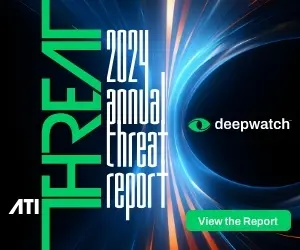
In cybersecurity threat modeling, Disclosure, Alteration, and Destruction (the DAD Triad) represent the three primary categories of adverse impacts that attackers can inflict on information systems. The adversarial mirror of the well-known CIA Triad (Confidentiality, Integrity, Availability) focuses on how attacks violate these principles. For SOC managers, cybersecurity architects, threat intelligence leads, and CISOs, the DAD Triad serves as a practical lens to classify threats, anticipate attacker objectives, and prioritize mitigations based on the harm posed to digital assets.
- Disclosure: Unauthorized Access to Sensitive Information
Disclosure refers to the unauthorized revelation of sensitive data—violations of confidentiality that expose private, classified, or proprietary information to unintended parties.
Adversaries achieve disclosure through tactics such as data breaches, packet sniffing, misconfigured access controls, phishing attacks, or exploiting vulnerabilities in applications and APIs. Whether targeting personally identifiable information (PII), intellectual property, health records, or authentication tokens, the aim is to exfiltrate data for monetization, espionage, or public exposure. Attackers may also leverage lateral movement to escalate access privileges and aggregate data across systems, amplifying disclosure risks.
In an enterprise context, disclosure has direct regulatory, financial, and reputational consequences. Violations of GDPR, HIPAA, CCPA, and industry standards (e.g., PCI-DSS) can result in substantial fines and class-action lawsuits. Disclosure also impacts supply chain trust and competitive advantage. Early detection of reconnaissance, data staging, and exfiltration behaviors is essential for cybersecurity operations teams. Techniques such as Data Loss Prevention (DLP), Zero Trust architectures, encryption at rest and in transit, and granular access control mechanisms are critical to limiting disclosure vectors.
2. Alteration: Unauthorized Modification of Systems or Data
Alteration encompasses any unauthorized change to data, configurations, code, or digital artifacts, directly undermining system and data integrity.
Attackers may tamper with logs, change financial records, manipulate control systems, or inject malicious code into applications or firmware. These activities occur daily in advanced persistent threat (APT) campaigns, cyber sabotage operations, and insider threats. Even subtle changes—like adjusting transaction amounts or modifying audit trails—can have long-lasting operational, financial, or legal implications. Software supply chain attacks (e.g., tampering with build processes or third-party components) are increasingly used to insert alterations at scale, compromising thousands of downstream organizations.
From the SOC and security engineering perspective, detecting alterations requires rigorous integrity monitoring, file change detection, and behavioral anomaly analysis. Organizations must implement cryptographic integrity checks (e.g., hashing), immutability features (e.g., write-once log storage), and secure software development lifecycles (SDLCs) that integrate source code verification and dependency scanning. Alteration is often more insidious than outright data theft because it erodes trust in data and decision-making systems, potentially without immediate visibility.
3. Destruction: Irreversible Damage to Data or Infrastructure
Destruction refers to the deliberate elimination or corruption of data, services, or systems, directly impacting availability and sometimes integrity.
Destructive actions include wiping databases, encrypting files via ransomware, disabling backups, bricking hardware, or deploying wiper malware. Destruction can be executed through direct deletion, sabotage of storage systems, firmware tampering, or physical attacks (e.g., targeting data centers or ICS environments). Unlike alteration or disclosure, destruction is final—it aims to render recovery either impossible or prohibitively expensive. Threat actors may use destruction for extortion (as in ransomware), to retaliate (as in hacktivism), or to strategically destabilize organizations and critical infrastructure (as seen in cyber warfare).
Enterprise defenses against destruction must include robust backup and disaster recovery plans, air-gapped or immutable backups, segmentation of critical systems, and incident response playbooks that address wiper-level scenarios. Additionally, continuous data replication and infrastructure-as-code practices enable rapid reconstitution of services. Cyber resilience—rather than mere prevention—becomes the focal point, especially when adversaries target critical infrastructure or time-sensitive operations.
Why the Disclosure, Alteration, and Destruction Triad Matters to Enterprise Cybersecurity Leadership and Operations
The DAD Triad is more than a threat taxonomy—it is a foundational component of proactive risk assessment, threat modeling, and incident prioritization. While the CIA Triad defines what defenders aim to protect, the DAD Triad defines how adversaries aim to break those protections. SOC analysts and CTI teams can better understand attacker objectives and refine detection engineering, response protocols, and recovery strategies by categorizing incidents and threats according to Disclosure, Alteration, and Destruction.
CISOs and CSOs benefit from the DAD model as a strategic tool for risk communication to executives and boards. It aligns security investments with concrete attacker behaviors and maps directly to compliance, business continuity, and resilience objectives. For example, identifying a high probability of “destruction” threats (e.g., ransomware) can justify spending on backup modernization and incident simulation exercises, while “disclosure”-centric threats (e.g., credential phishing) drive prioritization of identity and access management (IAM) and phishing-resistant MFA.
Moreover, incorporating the DAD framework into red team/blue team exercises, tabletop scenarios, and MITRE ATT&CK mappings allows organizations to simulate realistic threat impacts and evaluate their posture against varied adversary goals. This reinforces a risk-aware culture beyond perimeter defense to encompass detection, containment, and recovery.
Managed Security Services & the Disclosure, Alteration, and Destruction Triad
Managed Security Services Providers (MSSPs) play a critical role in enterprise cybersecurity, particularly when mitigating risks defined by the DAD triad. MSSPs help organizations reduce operational burdens while enhancing their security posture against advanced threats by delivering scalable, around-the-clock threat monitoring, detection, and response.
- Protecting Against Disclosure: MSSPs bolster confidentiality by providing continuous monitoring and incident response capabilities that detect and contain unauthorized data access attempts. MSSPs help prevent data leaks, credential theft, and lateral movement by threat actors through real-time correlation of logs, threat intelligence integration, and behavior-based anomaly detection. Advanced DLP (Data Loss Prevention) policies, managed firewalls, and endpoint detection and response (EDR) tools managed by MSSPs offer proactive alerting and remediation. These services are essential for meeting compliance requirements like GDPR and HIPAA, where unauthorized disclosure can lead to severe penalties.
- Mitigating Risks of Alteration: MSSPs play a vital role in safeguarding systems and data integrity by deploying and managing integrity monitoring solutions and baselining regular activity. They detect unauthorized file changes, unauthorized privilege escalations, or code alterations within enterprise applications and infrastructure. MSSPs use SIEM platforms to correlate alerts with known attack patterns (e.g., MITRE ATT&CK TTPs), allowing for early identification of tampering or malicious configuration changes. By managing vulnerability assessments and patch management workflows, MSSPs also ensure that exploitable weaknesses that could lead to data or system alteration are identified and remediated promptly.
- Responding to Destruction Threats: MSSPs enhance availability and resilience through rapid threat containment, managed backup validation, and DR/BC (Disaster Recovery/Business Continuity) planning. They provide 24/7 SOC operations to detect destructive behaviors such as ransomware encryption, wiper malware deployment, or mass file deletion attempts. MSSPs also assist in simulating destruction scenarios through red team/blue team exercises, ensuring recovery mechanisms are tested and effective. Their experience across client environments enables rapid containment playbooks and cross-industry knowledge transfer during destructive cyber events.
MSSPs serve as a force multiplier for enterprises seeking to operationalize the DAD triad. Centralizing security expertise, tools, and processes enables faster threat detection, coordinated incident response, and more resilient infrastructures. As adversarial tactics evolve, leveraging MSSPs for continuous defense against disclosure, alteration, and destruction threats becomes increasingly essential.
Conclusion
The DAD Triad is an indispensable framework for cybersecurity professionals in large enterprises. It crystallizes attacker intentions into actionable categories, enabling more precise threat modeling, tailored defense strategies, and robust incident response. As digital environments become complex and cyber adversaries adopt multi-vector strategies, integrating DAD into security operations will be crucial for maintaining a defensible enterprise and safeguarding mission-critical assets.
Deepwatch® is the pioneer of AI- and human-driven cyber resilience. By combining AI, security data, intelligence, and human expertise, the Deepwatch Platform helps organizations reduce risk through early and precise threat detection and remediation. Ready to Become Cyber Resilient? Meet with our managed security experts to discuss your use cases, technology, and pain points, and learn how Deepwatch can help.
Learn More About the Disclosure, Alteration, and Destruction Triad & Related Topics
Deepwatch offers a range of resources tailored for cybersecurity operations professionals aiming to enhance their understanding of the DAD Triad, including:
- Deepwatch ATI Annual Threat Report 2024: This comprehensive report delivers key observations, metrics, and trends from 2023, offering forecasts for what organizations can expect. It provides insights into various threat actors and their tactics, which can be mapped to the DAD Triad components.
- Cyber Intel Briefs: Deepwatch’s weekly Cyber Intelligence Briefs analyze new threats and techniques, delivering actionable intelligence for SecOps organizations. These briefs often cover incidents involving unauthorized data access (Disclosure), data manipulation (Alteration), and destructive attacks (Destruction). For instance:
- August 24 – 30, 2023: Discusses Lazarus Group’s malware deployment stealing funds from brokerage accounts.
- September 14 – 20, 2023: Covers Iranian nation-state actor Peach Sandstorm’s evolving tactics in global intelligence collection.
- January 18 – 24, 2024: Highlights Androxgh0st’s targeting of AWS, Office 365, and other services for malicious activities.
- Threat Intelligence Section: This section encompasses Customer Awareness Advisories, Cyber Intel Briefs, Significant Cyber Events, Cybersecurity Threat Reports, and Industry Insights. These resources provide detailed analyses of threats that can be categorized under the DAD Triad, aiding in developing comprehensive defense strategies.
